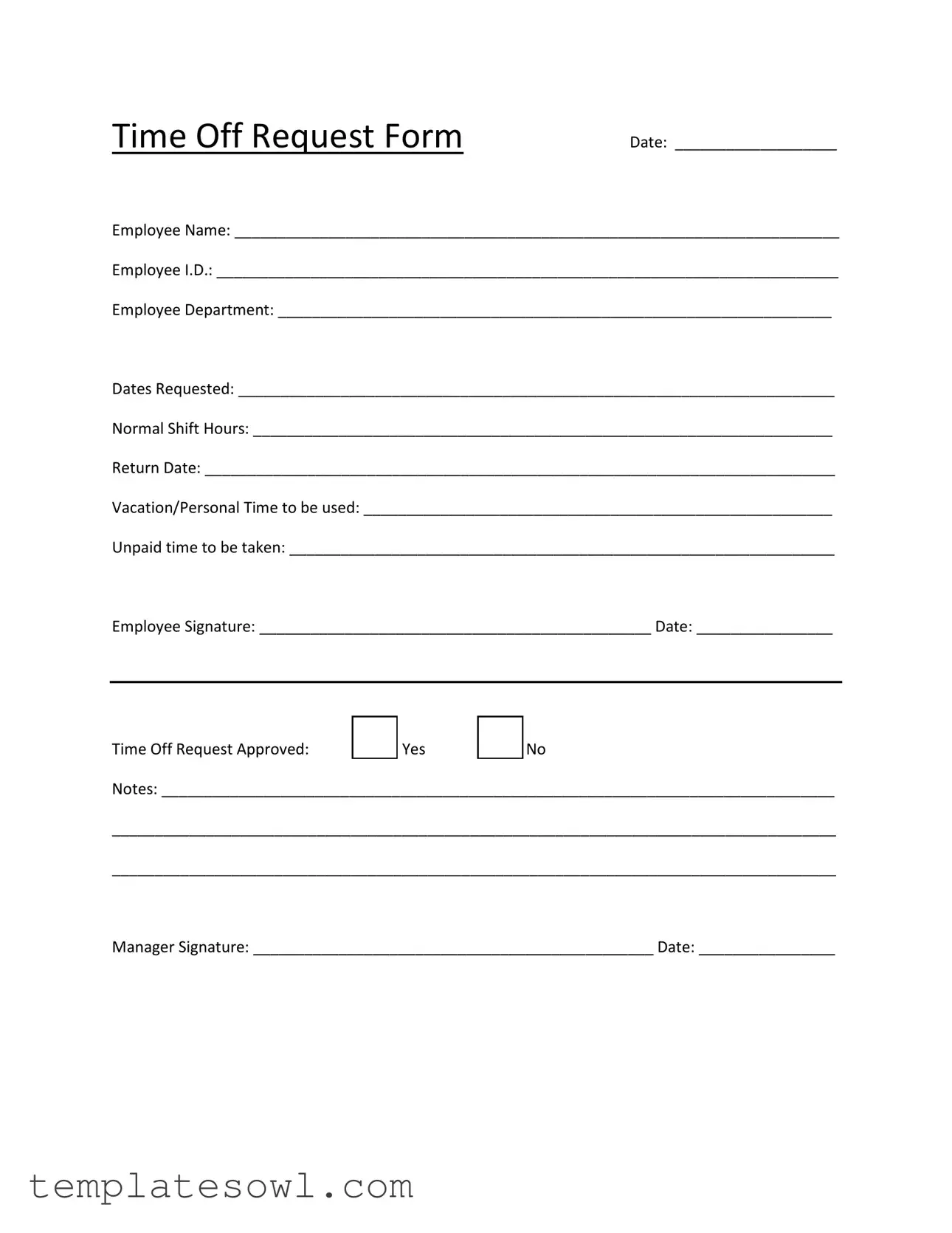Time Off Request Form |
Date: ___________________ |
Employee Name: _______________________________________________________________________
Employee I.D.: _________________________________________________________________________
Employee Department: _________________________________________________________________
Dates Requested: ______________________________________________________________________
Normal Shift Hours: ____________________________________________________________________
Return Date: __________________________________________________________________________
Vacation/Personal Time to be used: _______________________________________________________
Unpaid time to be taken: ________________________________________________________________
Employee Signature: ______________________________________________ Date: ________________
Time Off Request Approved:YesNo
Notes: _______________________________________________________________________________
_____________________________________________________________________________________
_____________________________________________________________________________________
Manager Signature: _______________________________________________ Date: ________________

